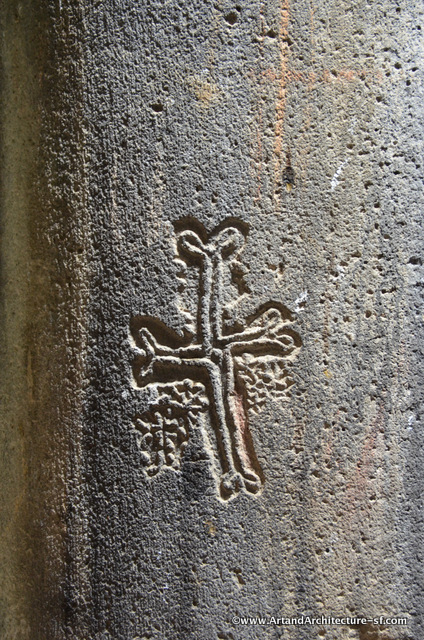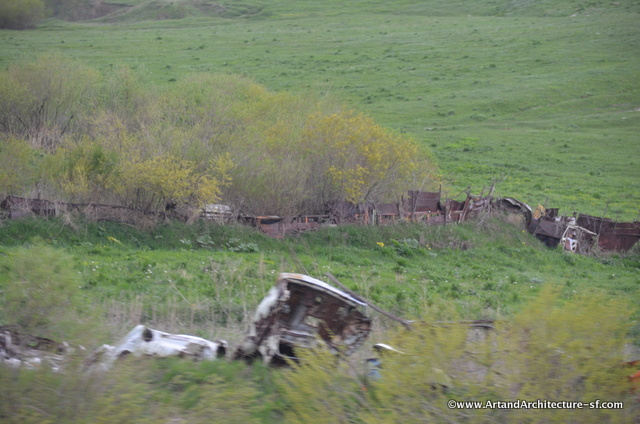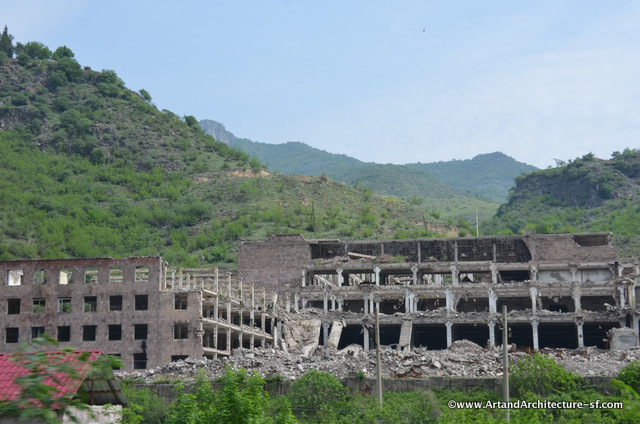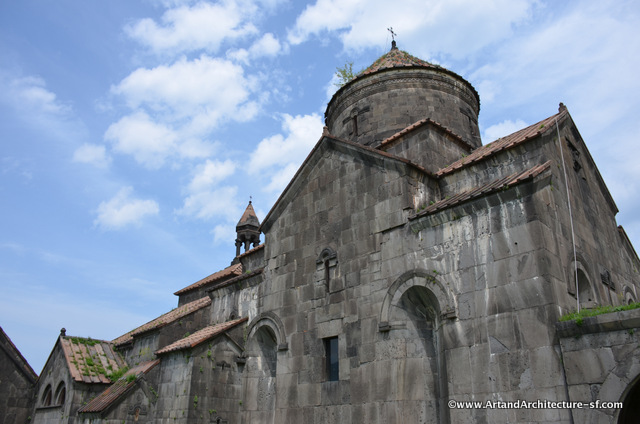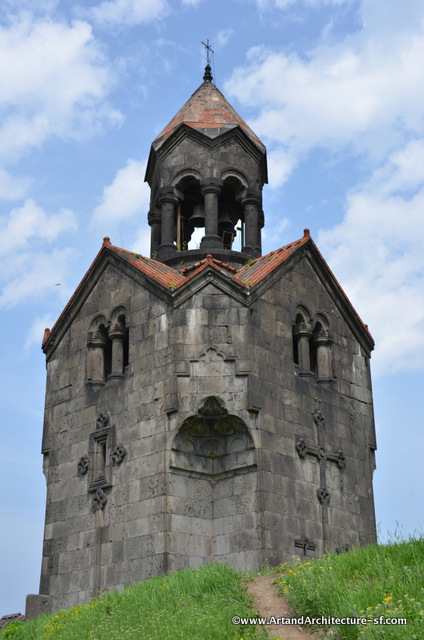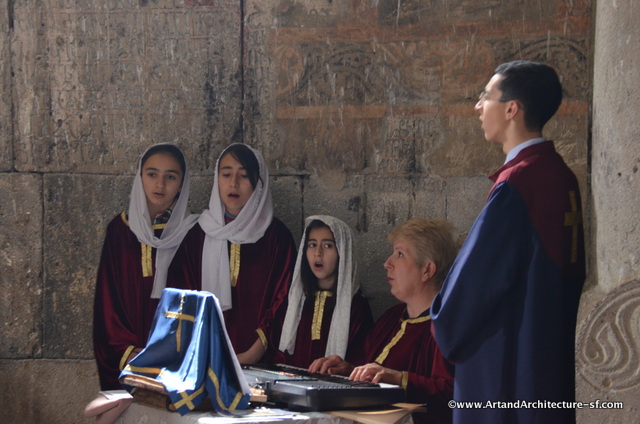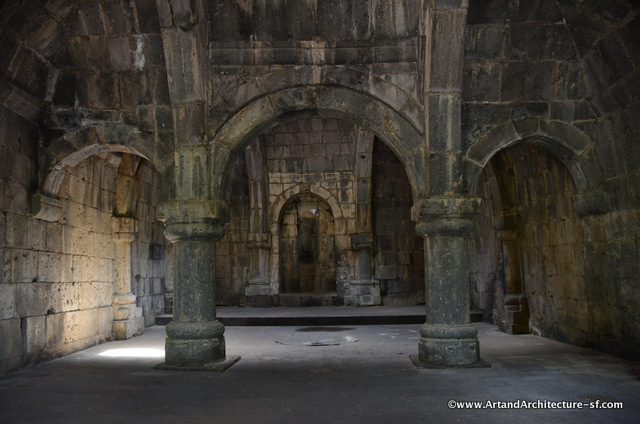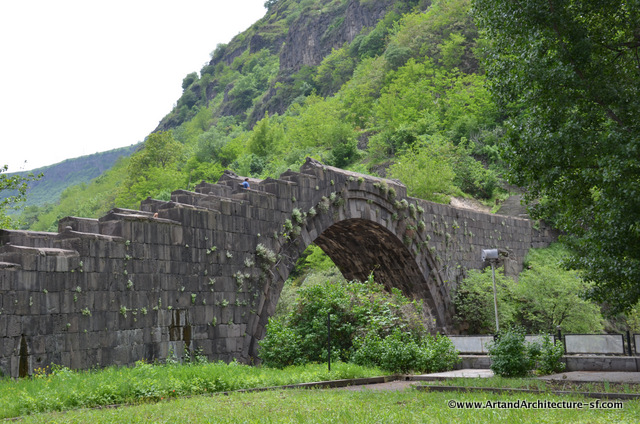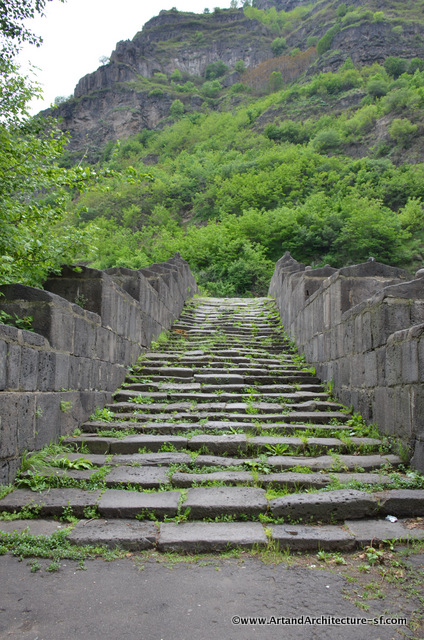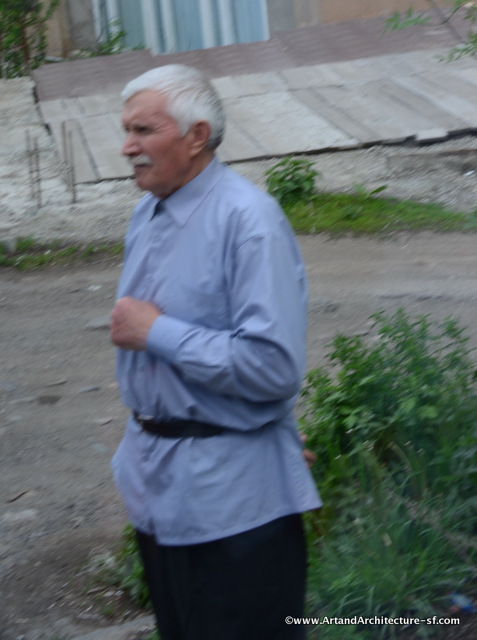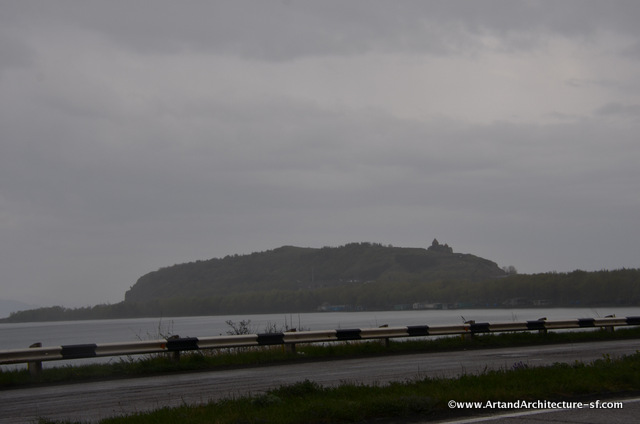May 052014
May 2014
Armenia is much smaller than Georgia, covering only 11,482 square miles. It is a country of only 3.2 million people, and 98% are ethnic Armenians. The capital is Yerevan, and it was established in 782 BC. One-third of the population of Armenia lives in Yerevan.
Armenians call themselves Hyastan after Haik, the great great grandson of Noah, and of course, with the assumed landing of the Ark at Mount Ararat (which now sits in East Turkey), Mount Ararat stands as the symbol of Armenia. Armenia is staunchly Christian. The apostolic Church of Armenia is the oldest church in the world, as Armenia was the first country in the world to declare Christianity as its state religion in 301 AD. Today the church faces a most serious problem with a lack of men willing to enter the clergy.
Armenia is an Indo-European language closest to Greek but very limited in its actual foundation. It has 36 letters, and most Armenians can read their ancient language since it hasn’t changed since the beginning of time. Armenian does however borrow heavily from other languages. The language was founded in the 5th century by Meshrup Mashtots, who is considered a national hero. There are only 14 alphabets in the world. Georgia and Armenia each are one of these 14.
Armenians are well educated and credited with inventing MRI, the Mig jet, plastic surgery, and the single-handled water faucet, to name a few.
Armenia has six distinct ecological zones, so the countryside, as you drive through it, varies constantly. It is home to the Prunus Armeniaca or apricot. So the apricot is another symbol of Armenia, and they even have a film festival where they give out the Golden Apricot.
The Armenians have suffered far greater from the breakup of the Soviet Union than Georgia. Similar to Georgia, a goodly portion of their income comes from the Armenian diaspora. Armenia is still mentally very Soviet. There is no democracy, and they have done far fewer economic reforms than Georgia. Bureaucracy, bribery, and corruption are still a large part of the Armenian way of life.
Their two problems are their “state of war” with Azerbaijan and the genocide issue with Turkey. These two situations have forced border closings with those two countries and sanctions. Because of this, Russia has had the ability to put big pressure on Armenia so that 80% of the Armenian economy is owned by Russia. This forces Armenia to actually be somewhat of a client state despite the fact that it is, in fact, independent.
The Dashnaks, or militias, are still around, although their most active period was throughout the 20th century. During the 1970s the Dahsnaks were responsible for the assassinations of diplomats found to have been part of the Armenian genocide. The last of these assassinations were in Canada in the 1990s.
It is essentially an all-day drive from the border to Yerevan.
The first stop on that road was the Haghpat (which means solid walls) Monastery complex. This UNESCO site was founded in the 10th century and was added to over a two-hundred-year period. The architecture, which is a blending of Byzantine church architecture and local Caucasian architecture, was just amazing. The size of stone used, and in such a simple manner, was majestic and royal.
*
*
Next stop was the Sanahin Bridge in the town of Alaverdi. The bridge was built in the 12thcentury as was used for all types of traffic until the 1970’s today it serves as a footbridge only.
Sadly Alaverdi is also the site of a Russian copper smelting operations, which were abandoned upon the breakup of the Soviet Union. The horrendous ecological situation is obvious by just standing on the street looking into the abandoned plant and down into the river that runs beside it.
Lunch was with a Molokon family. The Molokon are a breakaway sect of Orthodox Christianity. They do not believe in iconography, they pray but do not make the sign of the Christ, they abhor alcohol, TV and the internet. They are pacifists and marry only others of their own faith. The men wear beards and the women scarves. The society is a male dominated society. They have been described as very industrious and honest. There are Molokon’s around the world including Los Angeles and a group in Potrero Hill San Francisco; the SF church is at 841 Carolina Street
Lunch was meager but good, and in a house that is so poor, that it was very sad. No photographs were allowed due to their religious convictions.
I snapped a picture of our host as he left his home, and the other photo I took off the internet. The woman looked much like our hostess. Yes we too noticed our host was clean shaven, there are many rules and many different interpretations of this religion, and in fact there was a TV in the room we ate in.
We passed by Lake Savan, it was pouring rain by this time. Savan is the 2nd world’s largest Alpine Lake at 48 ½ miles long. During Stalin’s time the Russians had plans to use the lake for power production and irrigation and the lake shrank by 59 feet, while tragic, it showed a small island that held a bronze age settlement that was an absolute treasure trove for archaeologists.
We arrived in Yerevan in time for me to get this off and head to dinner.
This Soviet era monument was erected to mark the 50thanniversary of the Soviet power in the Caucasus its design was intended symbolically to represent the eternal union of Armenia Georgia and Azerbaijan under Soviet rule. That it is still standing perhaps shows that the Armenians have a well-developed sense of irony

